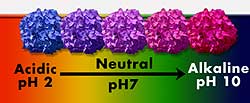Wood Ash in the Garden
Now that those chilly winter evenings are here, lots of people have been stoking up their slow combustion heaters or warming themselves in front of glowing open fireplaces. In fact many of those people have written in to Burke’s Backyard asking if it’s all right to put wood ash onto the garden. The good news is that if you’re burning charcoal or wood, a small amount of ash is actually beneficial for soils in many areas of Australia.
Using ash as a liming agent
Basically pure wood ash consists of calcium, potassium and magnesium. Because it contains calcium it will raise the pH of the soil, and can be used on acid soils instead of lime. As the ash contains potassium, it is particularly good to use around flowing plants. However, be warned that in the following circumstances ash could be harmful for gardens: If you are using treated pine (copper arsenic treated timber) as fuel. Hopefully, you wouldn’t consider doing this, as treated pine gives off dangerous fumes when burnt. Some charcoal or briquettes have added chemicals to make them burn faster. These can be a problem in the garden. Read the label on the bag or check with the manufacturer before using ash from these products on the garden. If you have alkaline soil (pH > 6.5). Most Australian soils are acidic (pH < 6), except for some areas around Adelaide and Perth which have limestone soils.
(Note: ash should not be used instead of fertiliser – it does not contain nitrogen, one of the most important elements for plant growth.)
Testing the pH of your soil
To test the pH of your soil, buy a pH kit and follow the instructions on the package. Kits are available at nurseries and garden centres, or you can purchase one from Burke’s Backyard (see below). If you don’t want to bother with a pH kit, you can simply look at hydrangeas growing in your garden or in your neighbourhood. If you have alkaline soil the flowers will be pink or red. If you have acid soil the hydrangea flowers will be mauve and blue.
How much ash can I safely apply?
For average soils you can apply about a shovel full, or 1 kilogram to the square metre. Spread it out and scuff it into the soil to prevent it blowing around in the wind. Again, don’t add ash to your garden beds if you live in an area with alkaline soils, such as Adelaide and some areas near Perth.



